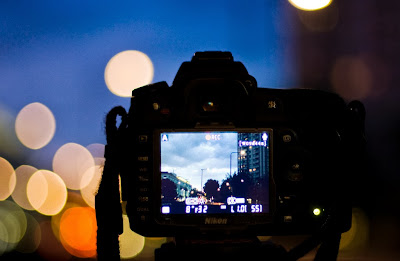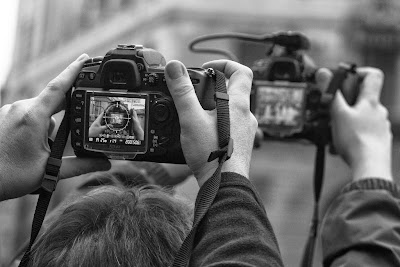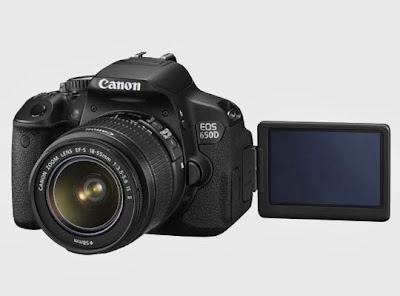What is Live View? Understand its Advantages and Disadvantages so as to know when to and when not to use it.
 |
| Photo by: Jerry Wong |
What is Live View in Digital Photography?
 |
| Photo by: James Offer |
Live view allows you to use the LCD screen of a DSLR camera to see in real-time what normally is seen through the optical viewfinder. Basically this allows one to compose and take a picture using the LCD screen on the back of the camera rather than having to look through the viewfinder.
The concept of live view is not new, digital point and shoot cameras had this capability all along, but for DSLR cameras it’s a relatively new feature. Many people who upgrade from point and shoots find this a very useful feature as they are more used to using their camera this way and this is one of the reasons why this feature is on every single DSLR available in the market today.
How Live View Works
 |
| Photo by: Atache |
Normally the mirror in front of the DSLR sensor reflects the light towards the optical viewfinder. It flips up to let the light fall on the sensor only at the time of exposure. But when the camera is set to live view, the mirror flips up and stays up. Similarly the shutter which in normal shooting stays closed and opens only during exposure will also remain open when the camera is set to live view. When you take a picture in live view the shutter which is open will first close, then open to start the exposure, close to end the exposure and then open again to resume live view shooting. This is the reason why there seems to be a lot of mechanical noises when shooting in live view.
Advantages of Live View
 |
| Photo by: Whitematter |
For DSLR camera users, the introduction of live view was a revolutionary step and not just a gimmick as some are led to believe. Live view has some significant advantages when photographing certain subjects let us briefly discuss some of those.
One major advantage of live view is that you get to see 100% of the image. Most DSLR cameras do not feature a 100% optical viewfinder as a result you will get a slightly different (wider) framing than the one you had intended. This means certain elements that you intentionally avoided while framing will end up showing in the final picture. Although a simple crop could fix the problem, why lose image data when you can compose precisely.
When shooting in live view you have the option to place different types of grids over the image display to help you better compose your frame and also to make sure important features like the horizon lines are parallel in your picture.
Some DSLRs feature a horizon display that can show you if the camera is level or not as you compose the shot.
When you need to take pictures from a higher angle with the camera held above you or when you need to compose from the ground level, live view could be a life saver. It encourages you to be more creative with your choice of camera angles.
Live view is very useful when shooting portraits as it allows you to retain eye contact with your subject while shooting rather than having them look down the lens.
Some DSLRs have an exposure preview mode, which shows the effect of exposure adjustments on the image in real time, combined with a histogram display you could nail your exposure precisely and avoid any shadow or highlight clipping.
Also since the live view image comes directly from the camera sensor it resembles the final photograph much more closely than the view in an optical viewfinder, any change in exposure, white balance, colour processing etc is also shown in live view mode.
Live view is also great for very precise focusing, you have the ability to zoom the image display up to 10x to check focus making even manual focusing a very easy process.
Disadvantages of Live View
Most DSLR cameras use phase detection systems for focusing in normal cases, but when shooting in live view they shift to contrast detection systems; typically contrast detection systems are not as fast as phase detection systems and as a result focusing could be a slower process when shooting in live view.
When shooting via a traditional view finder the camera is held more steadily as it rests against your face and your arms tucked in against your body working as an effective brace. But when shooting in live view you need to hold it out to see the LCD screen and this method is more prone to camera shake.
Live View requires most of the camera electronics to work, the sensor, LCD etc. as a result it drains the batteries much faster than using the viewfinder.
When to Use Live View
Live view is more suited for shooting stationary subjects with the camera mounted on a tripod. So, live view is most commonly used when shooting still life, macro and landscape images. Another major application is for shooting portraits.
Live View and Articulated LCD Screens
 |
| Photo by: Murray |
Articulated screens found on newer DSLR models like Canon EOS 700D or Nikon D5100 further extend the utility of live view. These screens flip out and rotate to any angle making composing a shot much easier with the camera placed at ground level or held high above the head or when shooting from tight corners when it’s not possible to get directly behind the camera.
Post a Comment